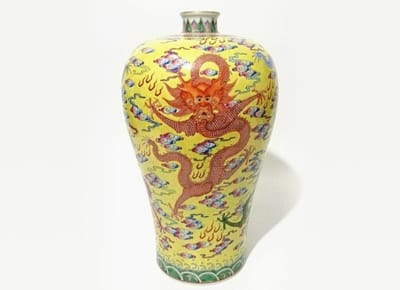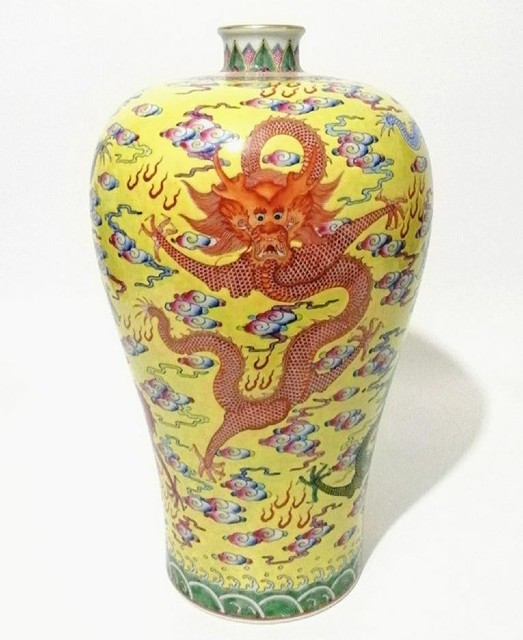
NEW YORK – Chinese famille rose porcelain has been admired for centuries, not only for its delicately beautiful color palette, but also its craftsmanship and decorative motifs, which are rich in symbolism.
Owing to its particularly suitable composition of mineral and clay deposits, the birthplace of porcelain (aka “china”) was in China, near Jingdezhen, where imperial kilns flourished during the reign of the Qianlong Emperor (1711-1799). Artists have long produced porcelain there for domestic use as well as export, often as diplomatic gifts. The very best pieces were held back for the imperial court. Much was exported to Europe, where artists often copied the Chinese pieces. By the late 18th-century potters, such as Meissen, proved to be stiff competitors.
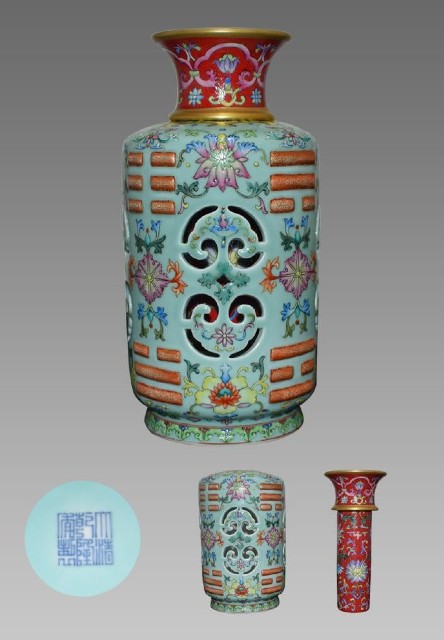
The Chinese kilns produced beautiful famille rose vases, brush pots, urns, dinner sets, bowls and plaques using specific techniques to first glaze and fire the porcelain at a high temperature and then overglaze-paint them before firing again at a lower temperature. There are several distinct famille (family) enamel color groupings they created besides famille rose, which got its moniker for its dominant pink hues). The others include verte (green), jaune (yellow) and noire (black). Starting late in the 17th century, artists learned how to mix colors in such a way as to achieve the slightest shading variations in hues, which is particularly noticeable in the opaque and bright hues seen in famille rose.
Among the most desirable, and highest selling, of famille rose porcelains are the vases, which come in several forms that are all collectible. Arguably the cream of the crop are the meiping vases (plum vases, so named as these vessels traditionally contained branches of plum blossoms), which date to the Tang Dynasty (618-907). They were first used as wine containers but soon gained popularity as a plum vase. A meiping vase is recognized for its tall but wide body with a rounded shoulder leading to a narrow neck. Gourd vases and double-gourd vases are also collector favorites, and the best examples will routinely bring seven-figure prices. A desirable variation is the double gourd moon flask vase, such as this example with handles, which brought $350,000 + the buyer’s premium in September 2016 at Empire Auction House Inc.
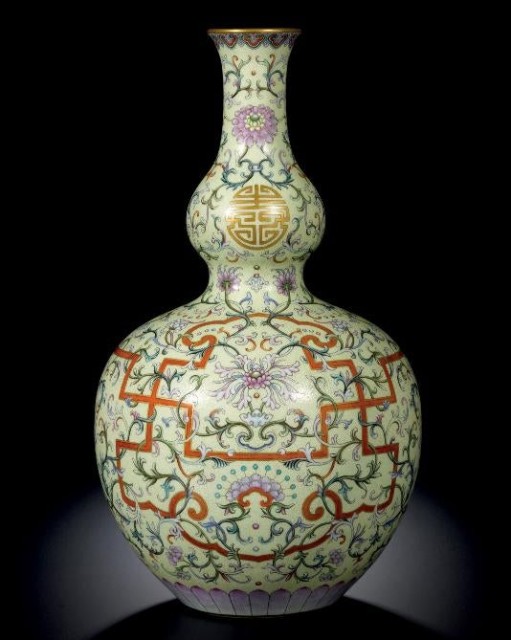
The Frick in Pittsburgh, Pa., is one of many museums that collect these porcelains. Their Chinese porcelains were acquired in 1915 by museum founder Henry Clay Frick. Chief among this collection is this lavishly decorated 18th-century Chinese vase. This tall vase having a long neck was fashionable in the 18th century and is referred to as a tianqiuping vase (meaning celestial sphere). “Close examination of this vase reveals work of astonishing skill – blushing peaches, delicately rustling leaves and a composition which uses the porcelain as a canvas, spreading the leafy branches and fruit and flower clusters across the surface asymmetrically, rather than arranging them in a repetitive, decorative pattern,” according to Sarah Hall, Chief Curator, Director of Collections. For a deeper look at another fine example of a tianquiping vase, check out this profile by Christie’s.
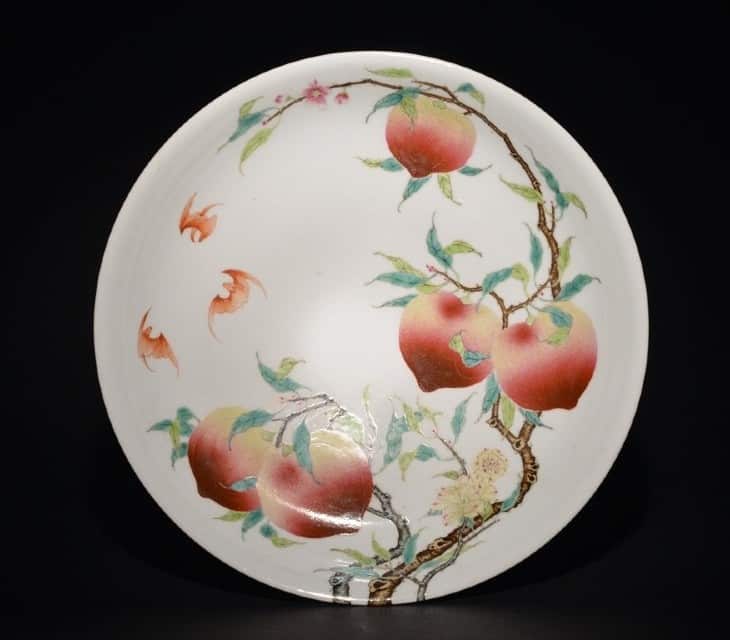
Flowers (particularly chrysanthemum, peonies, lotus and jasmine, which have great symbolism in Chinese culture and art), have been a dominant decorative theme on famille rose porcelains. Other oft-used motifs include dragons, birds, fruit and themes from literature or mythology. The peach is a favored motif among fruit and is associated with longevity. One might assume that the background object color on famille rose wares would be the traditional eggshell porcelain that was favored during the Qianlong period but there are many coveted examples in contrasting ground colors such as this yellow ground “Dragon” Meiping vase that sold for $11,375,000 + the buyer’s premium in June 2020 at Bellaire’s Auction, or a turquoise ground famille rose “Hui mountain retreat” teapot and cover. Desirable ground colors for famille rose include yellow, blue, pink, light green and coffee.
Besides vases, commonly seen famille rose forms also include plaques, brush pots and bowls. The brush pot (below) is painted with both a famille rose palette and remnants of grisaille. It depicts a scholar with a qin carrying attendant amid a natural landscape.
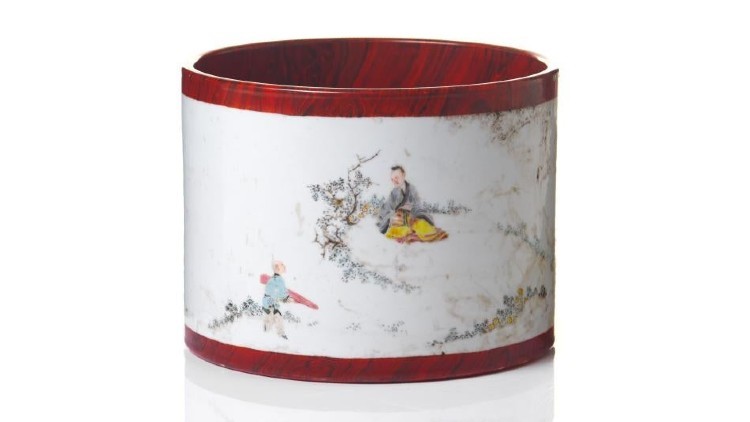
A set of two Republic period porcelain plaques depicting bearded gentlemen realized $400,000 + the buyer’s premium in June 2014 at Michaan’s Auctions, while Bruneau & Co. Auctioneers sold a famille rose plaque showing two figures bearing weapons in July 2020 for $77,000 + the buyer’s premium. A popular collecting subgenre of its own is the Chinese snuff bottle. This snuff bottle with portraits of two dogs sold in July 2018 for SGD $140,000 ($102,368 US) + the buyer’s premium at Singapore International Auction Pte Ltd.
Antique Chinese porcelains have spawned a multimillion-dollar global industry, but setting aside issues of money or a desire to reclaim cultural objects, the beauty of famille rose objects speaks volumes. While there are many types of Chinese porcelains that are all desirable, famille rose continues to hold a special place in many collectors’ hearts, just as it has since its birth in the 1720s.
# # #


